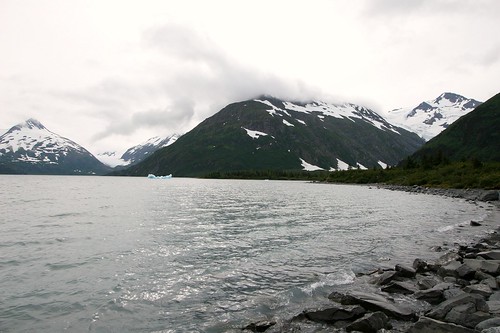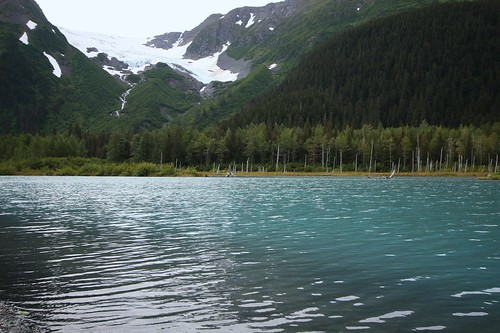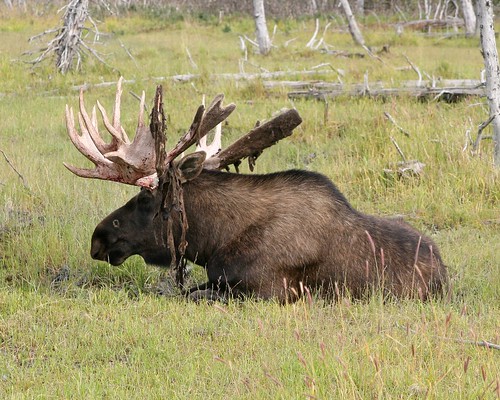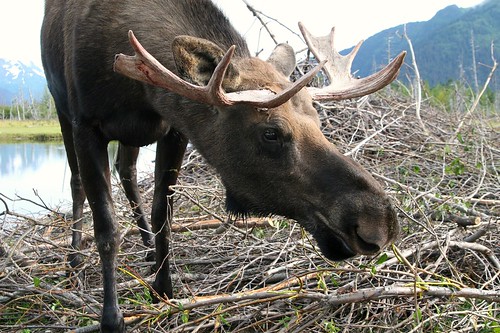We were now one day closer to our boat trip. The boat trip, however, departed from Seward, so this day was all about driving from point A (Anchorage) to point C (Seward) with a short side trip to point B (Portage Lake).
View Larger Map
This drive took us past Turnagain Arm (again). Since it was another mostly cloudy day, and the tide was out, it looked the same this day as it had on our previous visit.
My previous post of the horse shaped iceberg (or is it dragon shaped?) was from the short side trip to Portage Lake. Here is a wide-angle view of Portage Lake, taken from the Begich, Boggs Visitor Center. The distant glacier in this photo (middle left) is actually Burns Glacier, not Portage Glacier. About a hundred years ago, Burns Glacier flowed into Portage Glacier, and Portage Glacier terminated close to where this picture was taken. Since then, Portage Glacier has receded considerably (nearly 5km), exposing Portage Lake along the way. It has, however, been fairly stable since 1999. While the retreat of Portage Glacier was helped by a warming climate, the main driver was the transition from a land-based terminus to a water-based terminus. Said another way, glacier ice calves more frequently in water than on land. You can read a more thorough history (and see historical photos) here.
We also stopped to experience the quiet beauty of a lake with views of Explorer Glacier. We could have sat here for hours, but lack of food and the desire to arrive in Seward urged us onward.
After our little side trip to Portage Lake, we got back onto the main road heading south towards Seward. Soon after that we discovered the Alaska Wildlife Conservation Center (AWCC). They are a non-profit that takes in injured and orphaned animals. Those that cannot be released back into the wild are given a home on the AWCC property. You can drive or walk through and see Moose, Elk, Black Bear, Grizzly Bear, and a few others.
I am glad that there is a group like the AWCC to care for these animals. I suspect that without the AWCC, these animals would not be alive. But seeing wild animals kept behind fences has always been a bittersweet experience for me. As much space as the AWCC provides these animals, they are still stuck behind a fence. Ah...if only the world was the perfect place I wished it would be ;-)
The resident Moose seemed very used to humans. They would saunter up to the fence even when people were nearby. We got a nice face-to-face encounter with a Moose.
Other than good judgment (and a dose of fear), there was nothing preventing me from reaching through the fence to touch this really large animal. I saw some others doing that very thing later in our visit, but that fence did not seem to really provide much of a barrier. Moose are BIG, and they have pointy antlers.







1 comment:
Beautiful series of images...love the compositions
Post a Comment